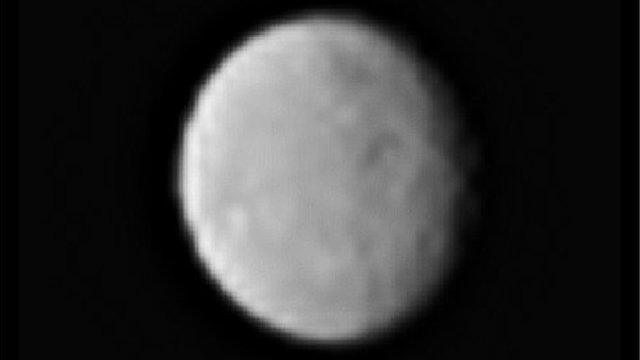Dwarf Ceres captured in colour
- Published
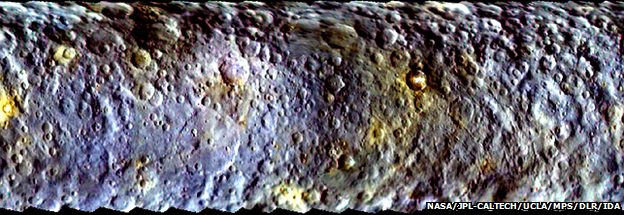
Ceres in colour captured by Dawn's Framing Camera: The colours are false and exaggerated
The US space agency's (Nasa) Dawn mission to Ceres has released its first colour map of the dwarf planet.
The colours illustrate variations in surface materials, hinting at the diverse processes that have helped shape this 950km-wide body.
Dawn arrived at Ceres - the largest object in the main asteroid belt between Mars and Jupiter - on 6 March.
Scientists are still in the early observations stage, but already it is clear Ceres has had an active history.
"The colour differences that you see are mainly due, I'd say, to compositional differences at the surface," said Martin Hoffmann, who works on Dawn's Framing Camera.
"Then there would be minor contributions from the way light is reflected off the different grain sizes [in those materials]," he told BBC News.
Chris Russell: "The map gives us an idea of the diversity at the surface"
The map was released here at the European Geosciences Union General Assembly in Vienna, Austria, external.
It should be said, the colours are false and exaggerated. If the human eye were to look at Ceres, it would appear very dark and very homogenous in terms of colour.
The Framing Camera, however, with its great sensitivity, is able to pick up the subtlest of differences from one location to the next, and magnify them.
This allows scientists to begin to interpret the types of processes that might have sculpted the surface during the 4.5 billion years since its formation with the rest of the Solar System.
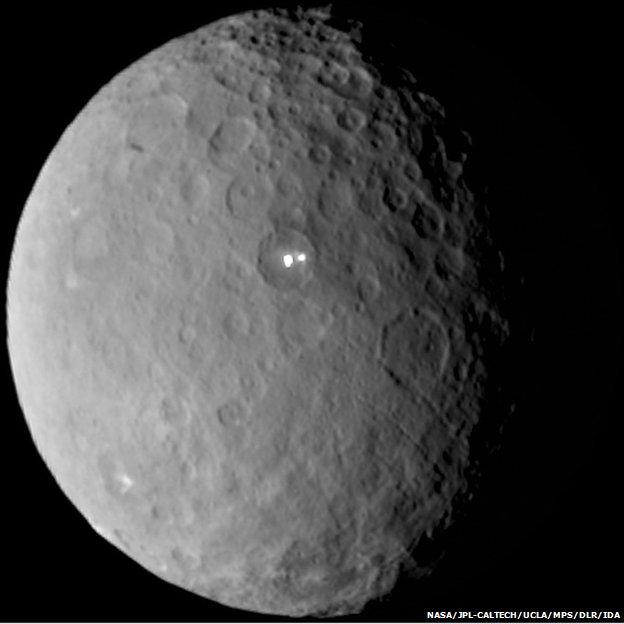
Everyone has been enthralled by Ceres' bright spots
Dawn is currently manoeuvring itself into its first full science orbit, which will bring it to within 13,500km of the surface.
Navigation images taken on Friday - although not yet released to the public - show a crescent dwarf as the spacecraft comes back around from the night side.
The crescent will grow in size over the course of April, enabling Dawn to once again image the sunlit disc - but this time at much higher resolution than the lead up to the 6 March rendezvous.
And in the coming days, the bright spots that so captivated scientists and space enthusiasts during the approach will also come back into view.
Researchers are trying their best not to get drawn into explanations of these features until the better-resolution data is available. But obviously these spots contain some highly reflective material. Bare ice would not be stable at the surface of an airless body like Ceres, so the early suggestions have lent more towards an exposure of salts.
Before going behind the dwarf on arrival, Dawn watched how the reflectivity of the spots changed during the Cerean day.
As expected, they brightened rapidly in the sunlight of the morning and started to fade towards dusk. But that in itself was quite interesting, said Dawn's principal investigator Chris Russell.
"It appears there are shadows crossing the reflecting region earlier than would be the case if it were a smooth region at the level of the material around it. So, the thought is right now - without having the resolution we really want - that there is a depression there, rather than a mound," he told BBC News.
"It's not a little mountain of bright material, but it might be some bright material in a pit, or something of that nature."
The not so hotspot
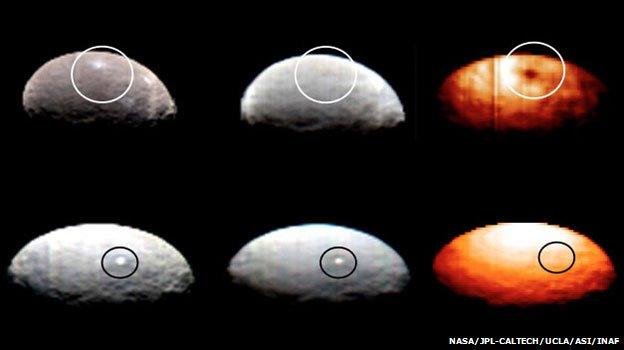
VIR data can be used to determine the temperature of surface materials
The upper trio is Region 1 at visible, infrared and thermal infrared wavelengths
At thermal infrared, the spot is dark - meaning it is colder than its surroundings
The lower trio represent Region 5. In thermal infrared, the spot disappears
This indicates there is no temperature variation with the surroundings
On the approach, Dawn's Visible and Infrared Mapping Spectrometer (VIR) assessed temperatures across the surface of the body.
It found the maximum daytime surface reading to be about 240 kelvin, or minus 33C.
To everyone's surprise, the VIR instrument saw different behaviours at the various bright spots.
One spot location, known simply as "Region 1" appears much cooler than its surroundings.
"Region 5", on the other hand, which is the enigmatic double spot that has garnered most media attention, displays no such temperature difference.
Federico Tosi, a VIR team-member, threw some caution into this observation, however: "One should keep in mind the fact that the VIR spatial resolution is still not high enough to disentangle whether this corresponds to a different surface composition, or to a different structure of the surface material, for example to a different thermal inertia driven by a different density of the surface material."

Another Mercator projection of Ceres showing the locations of Spots/Regions 1 & 5
Jonathan.Amos-INTERNET@bbc.co.uk and follow me on Twitter: @BBCAmos, external
- Published20 March 2015

- Published6 March 2015
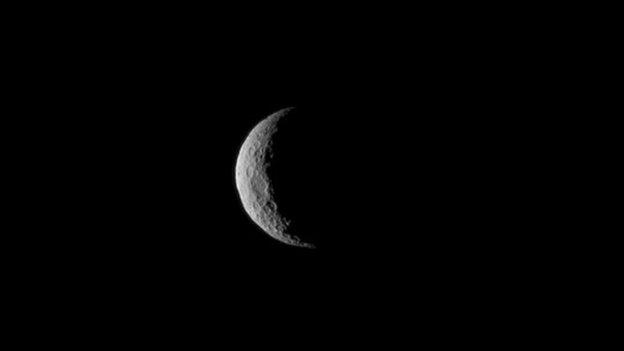
- Published2 March 2015

- Published5 February 2015

- Published27 January 2015
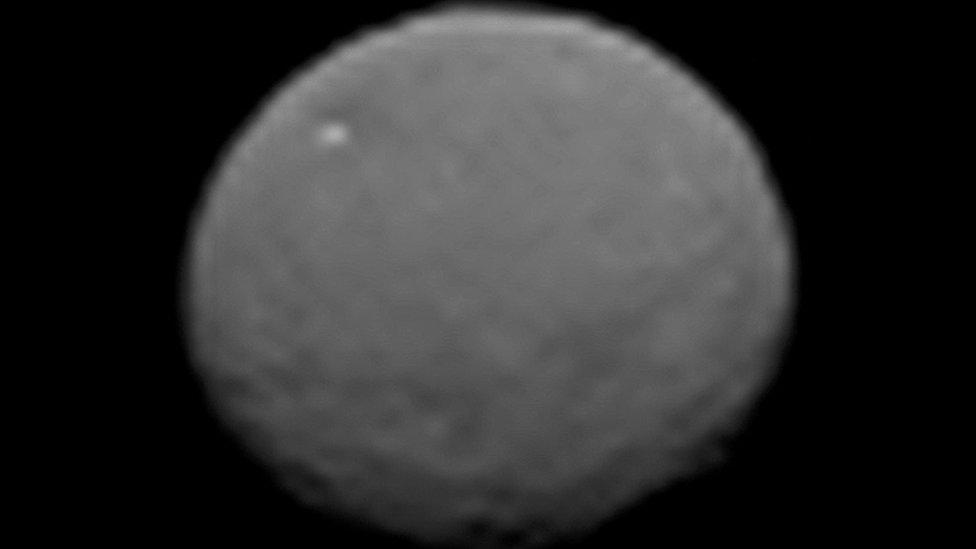
- Published19 January 2015
